The future of eCommerce is speed, flexibility, and innovation like not just a storefront.
Composable commerce lets you build your store from best-in-class parts, not one bulky platform.
It’s API-first, modular, and perfect for open source headless ecommerce setups using React, Next.js, or any custom frontend.
Let’s explore what composable commerce means, why it matters, and how to make it power your headless success.
What is Composable Commerce?
Composable commerce is a modern approach that lets you build your e-commerce stack from best-in-class, modular, API-connected components, instead of relying on one bulky platform
At composable commerce every part of your digital store, from product catalog and checkout to payments and search, is made up of modular and API-connected components.

Instead of relying on one large, monolithic ecommerce platform, composable commerce allows businesses to choose and combine best-of-breed solutions for each specific function.
With composable commerce, your ecommerce stack becomes flexible, scalable, and future-ready.
You can mix and match services such as Product Information Management (PIM), Order Management Systems (OMS), Search, Payments, and Customer Experience tools that all integrated through secure APIs.
At its core, composable commerce architecture is built on four key principles:
-
Modular Architecture – Each function runs as an independent module that can be replaced or upgraded anytime.
-
API-First Design – Every service communicates via APIs, ensuring seamless connectivity between systems.
-
Cloud-Native Deployment – Scalable and resilient performance through modern cloud infrastructure.
-
Headless Frontend – Frontend experiences built independently using modern frameworks like React, Next.js, or Vue.js.
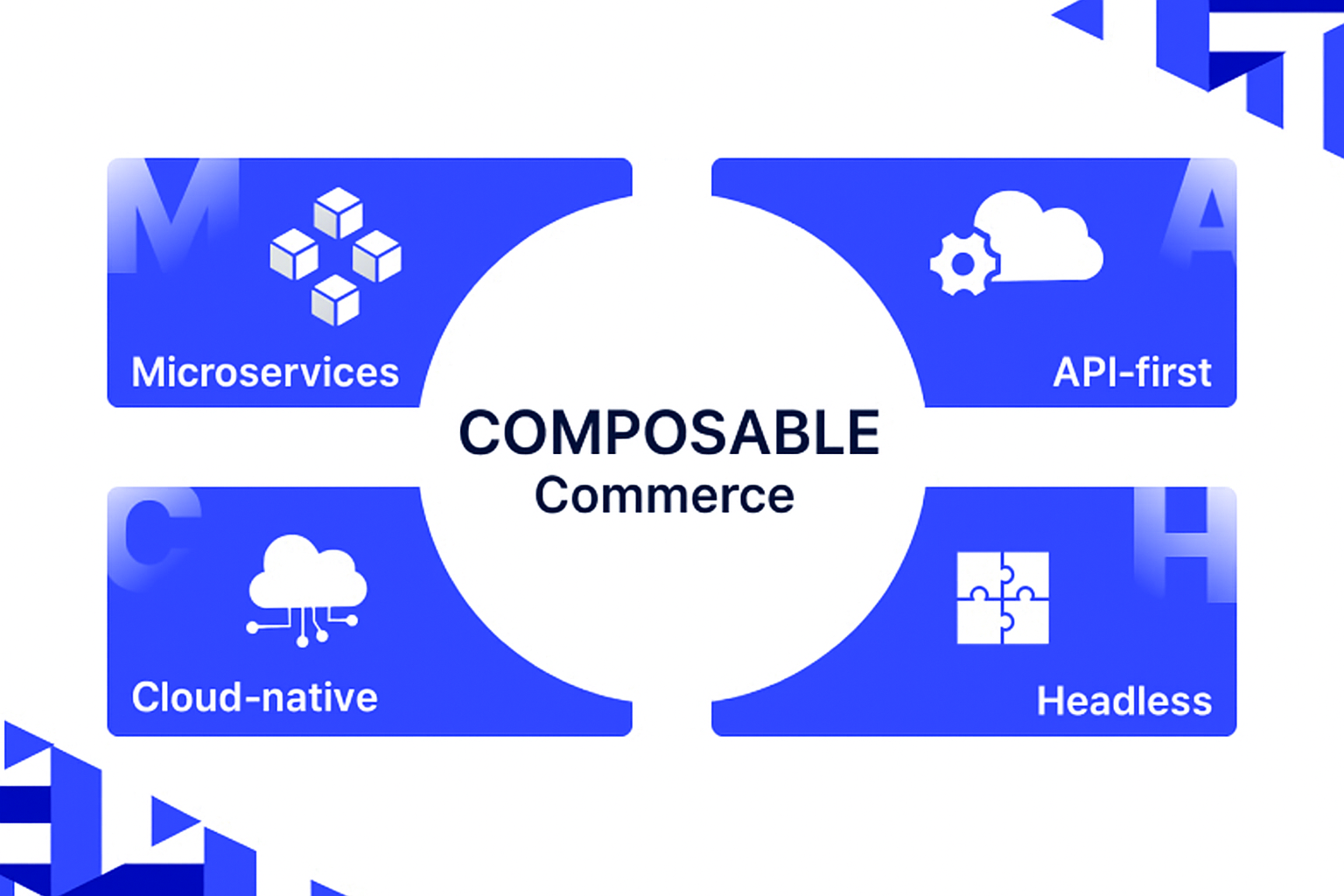
In simple terms, composable commerce gives brands the freedom to innovate faster, integrate new technologies with ease.
Composable Commerce creates personalized shopping experiences without being tied to one platform.
It’s the next evolution of headless commerce, offering agility and control across the entire ecommerce ecosystem.
By adopting composable commerce, businesses can future-proof their online stores, support omnichannel experiences.
It delivers high-performance ecommerce that evolves with customer expectations and technology trends.
Why Composable Commerce Matters for Headless Users
A. Market Drivers
Customers now interact across web, mobile, kiosks, and voice. Businesses must adapt fast, and composable commerce enables that agility.
Studies show 93% of organizations say tech limitations impact digital commerce operations.
B. Business Benefits
- Faster innovation and time-to-market
- Independent scaling of components
- Freedom from vendor lock-in
- Customizable tech stack
Developer insight: Composable Commerce lets you build ecommerce with plug-and-play modules and each handling things like products, search, or checkout.
It’s fast, flexible, and built on modular, API-first, cloud-native, and headless principles.
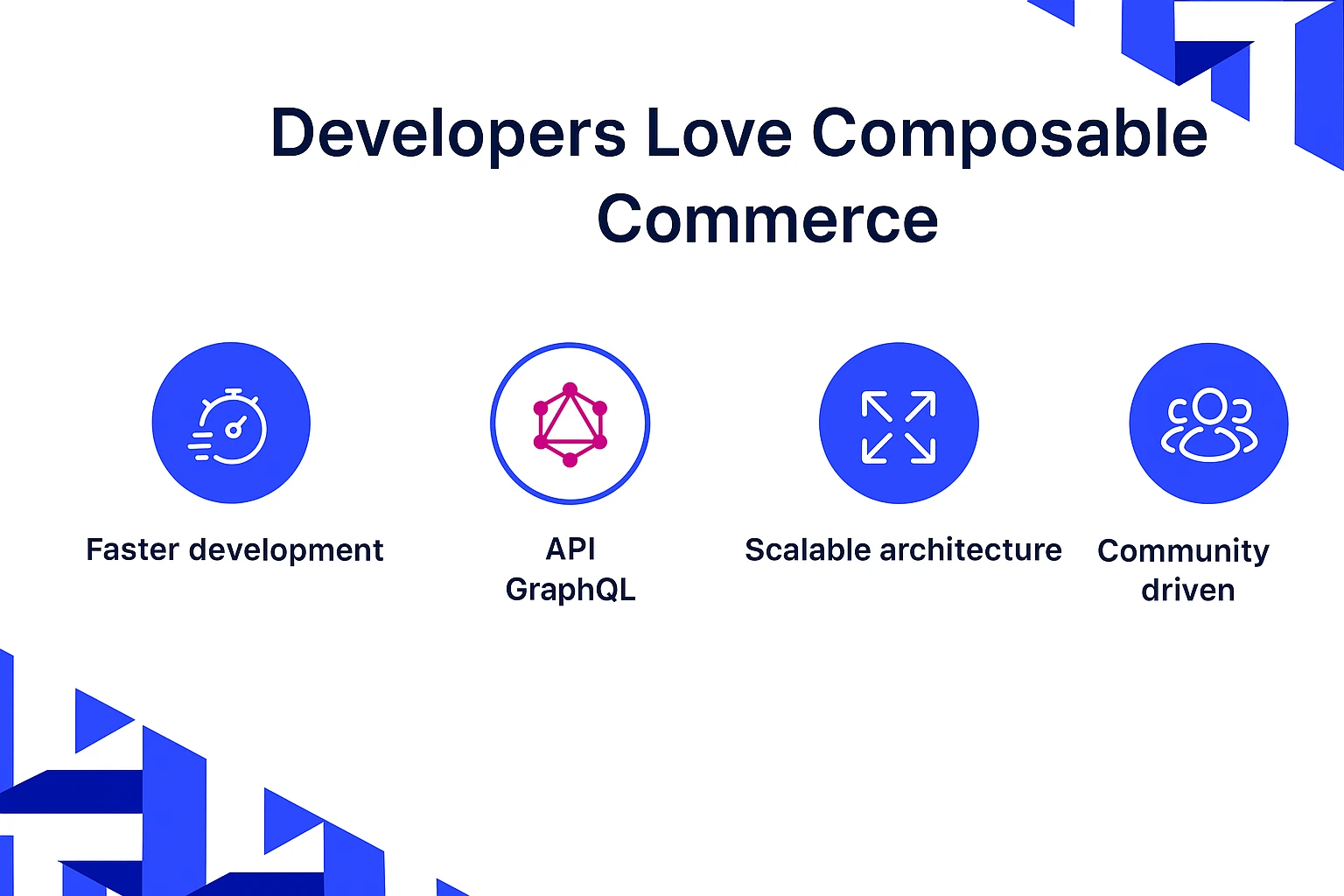
Composable Commerce vs Traditional Commerce
A. Limitations of Monolithic Platforms
Traditional ecommerce platforms bundle everything like frontend, backend, checkout, and promotions into one large system.
his causes rigidity, slower releases, and vendor dependency.
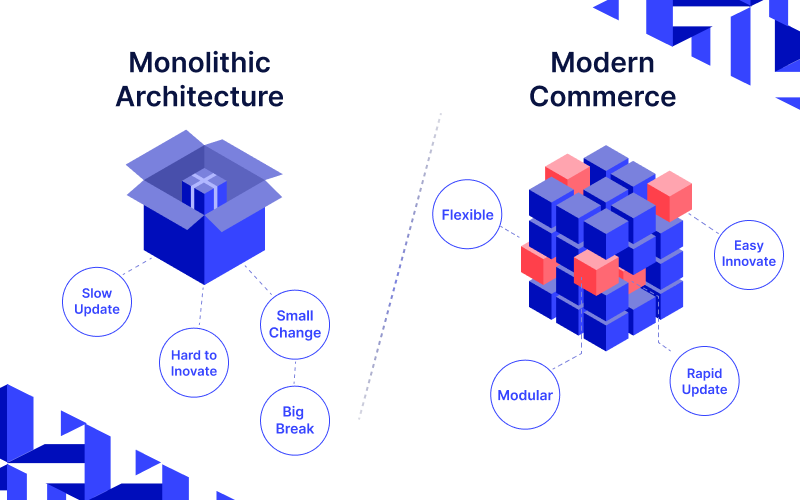
B. How Composable Differs
Composable commerce breaks this dependency:
- Components are decoupled — modify one without breaking the rest.
- Scale specific high-traffic modules independently.
- Freedom to select and switch best-of-breed vendors anytime.
Pro tip: Migrate incrementally and start by replacing a single module (e.g., search) instead of replatforming all at once.
Composable Commerce vs Headless Commerce
What is Headless Commerce?
Headless commerce decouples the front-end (UI) from the back-end commerce engine, giving teams design and channel flexibility.
How Composable Goes Further
Composable takes it further by making the entire back-end modular using microservices/PBCs.
Each business function (search, checkout, cart, loyalty) runs as an independent microservice.
Key takeaway: Headless = front-end freedom. Composable = freedom everywhere.
Key Architectural Foundations: MACH and PBCs
1. The Four Pillars of Modern Commerce: MACH
A. MACH Architecture
MACH stands for Microservices, API-first, Cloud-native, and Headless, the core tech stack behind modern, flexible ecommerce.
It’s what powers fast, scalable, and easily customizable digital commerce systems.
M – Microservices
Each ecommerce function, like cart, checkout, or search, runs as an independent microservice.
This modular setup allows every service to be updated, deployed, or scaled individually for faster performance and flexibility.
A – API-First
All services communicate through secure, well-documented APIs.
This API-first approach ensures smooth data exchange, easy third-party integrations, and consistent performance across platforms.
C – Cloud-Native
Built on modern cloud infrastructure, cloud-native commerce offers high scalability, resilience, and cost efficiency.
It adapts to demand spikes automatically, ensuring fast and reliable performance.
H – Headless
Headless architecture separates the front-end experience from the back-end logic.
This enables complete design freedom, faster development, and seamless omnichannel experiences across web, mobile, and apps.
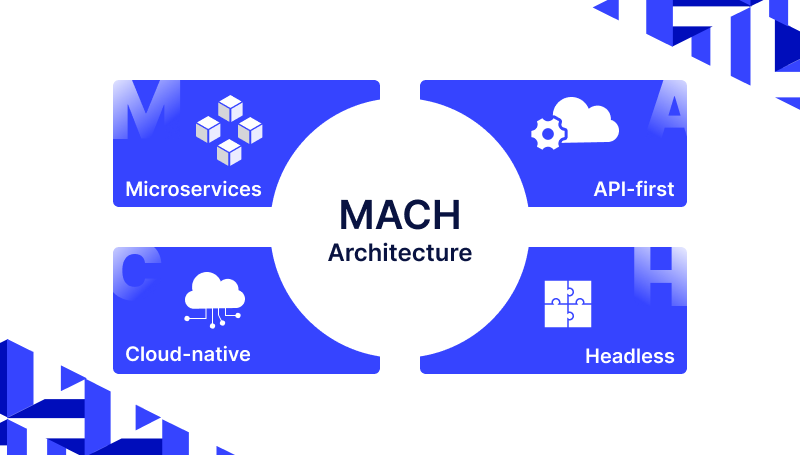
2. Packaged Business Capabilities (PBCs)
PBCs are modular building blocks (e.g., search, cart, PIM, payments). Each is independently deployable and upgradeable, forming your composable foundation.
Developer insight: Align your frontend React components with PBC boundaries, e.g., a checkout React component that consumes a checkout PBC API.
Building a Composable Commerce Tech Stack
Selecting Best-of-Breed Components
Start by identifying key modules like CMS, Search, Checkout, Payment Gateway, OMS. Choose best-in-class vendors or develop custom ones based on your needs and digital maturity.
Integration & Orchestration
Design how data flows across modules (e.g., Catalog → Cart → Orders → CRM). Use robust API management, logging, and fallback strategies.
Developer–Business Collaboration
Composable commerce requires strong collaboration — developers integrate modules, business users manage content via low-code tools.
Open-Source Headless eCommerce Options
Open source headless platforms provide the flexibility and transparency needed for composable commerce, without being tied to proprietary vendors.
They give developers full control over APIs, data, and customization while still aligning with MACH principles.
You can check this blog for top 10 open source headless ecommerce in the market.
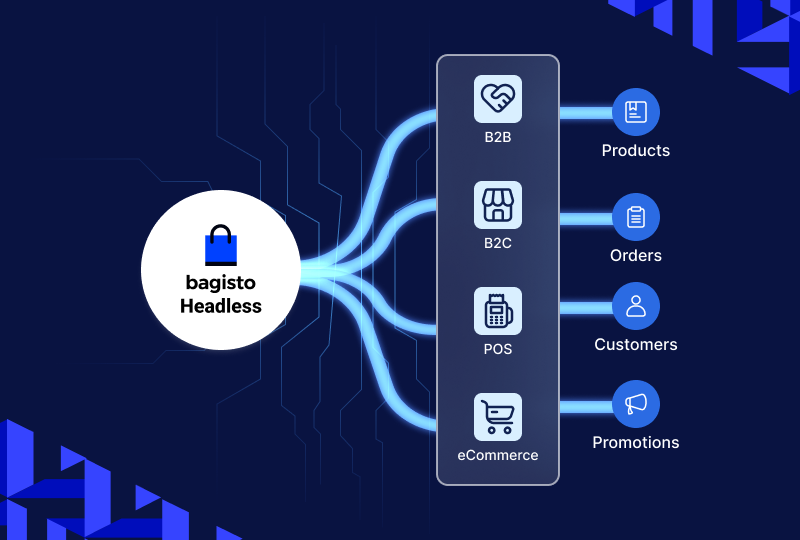
Popular Open-Source Headless eCommerce Platforms
- Bagisto Headless eCommerce – An open source composable commerce framework with GraphQL APIs, modular architecture, and native headless support. Build blazing-fast, fully customizable B2B and B2C storefronts using modern stacks like Next.js.
- Medusa.js – A Node.js-based headless commerce engine designed for composable setups. Integrates easily with Next.js, React, and custom storefronts.
- Saleor – Built with Python (GraphQL-first), ideal for high-performance storefronts. It supports multi-channel and modern PBC integrations.
- Sylius – Symfony-based headless solution focused on flexibility and B2B use cases.
- Vendure – TypeScript and GraphQL-based, perfect for composable and plugin-driven architectures.
Why Choose Open Source for Composable Commerce
- Freedom from vendor lock-in — modify or host your stack anywhere.
- Extensibility — add or replace PBCs using open APIs.
- Community innovation — access to plugins, integrations, and frequent updates.
- Transparency — inspect source code, security, and data models.
Developer insight: Combine open-source backends like Medusa or Saleor with React/Next.js frontends for a fully headless, composable setup that you can control end-to-end.
Implementation Strategies & Best Practices
Incremental Adoption
Adopt composable step by step. Start with one weak point (e.g., search or checkout) and build confidence before expanding.
Governance & Vendor Management
Establish clear ownership, integration standards, and SLAs with vendors. Maintain versioning and performance documentation for each module.
Performance Optimization
Multiple APIs can add latency — monitor Core Web Vitals, optimize API calls, and consider caching layers or CDNs for frontend performance.
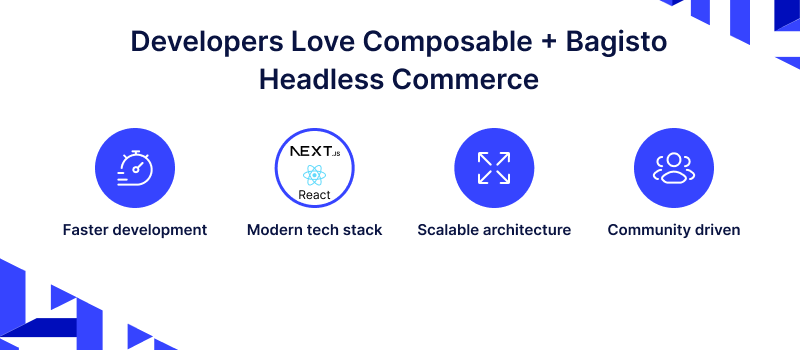
Real-World Use Cases
B2C Omnichannel Retailer
A retailer integrates specialized modules: PIM, search, loyalty, and a custom checkout for web, app, and kiosk — all orchestrated via APIs.
B2B Enterprise Expansion
Global B2B firms use composable architecture to manage regional tax, pricing, and fulfillment via localized PBCs.
Mid-Market Adoption
Smaller brands can begin composability by swapping a single capability — e.g., using a better product search service — to get faster results.
Cost, ROI, and Time-to-Value
Total Cost of Ownership
While initial costs may rise due to multiple vendors, composable architectures reduce long-term expenses via flexibility, innovation, and faster upgrades.
Agility & Time-to-Market
Composable teams iterate faster — updating one service doesn’t disrupt others, allowing rapid A/B testing and new feature rollout.
Risks & Trade-offs
Requires strong technical governance and maturity. Poor orchestration or vendor sprawl can increase complexity.
Challenges & Pitfalls
- Integration complexity between multiple services
- Vendor sprawl without proper governance
- Skillset and DevOps requirements
- Data consistency and security issues
Pro insight: Treat your composable ecosystem as a mesh of services, not a stack. Regularly audit dependencies, monitor health, and track ownership of each PBC.
Future Trends: From Composable to Intelligent Commerce
AI and Automation
The next evolution is intelligent commerce — combining composable architecture with AI-driven personalization, chatbots, and predictive analytics.
Emerging Channels
Composable commerce supports future-facing front-ends — from IoT devices to AR/VR stores — reusing the same backend PBCs across all channels.
Is Composable Commerce Right for You?
Checklist for Readiness
- Do you already use a headless frontend?
- Do you need rapid iteration or global scaling?
- Can your team manage multiple vendors?
- Are you ready for integration complexity?
Roadmap to Get Started
- Identify one backend pain point to modernize
- Define API boundaries and choose vendor/PBC
- Integrate with your headless frontend
- Measure ROI and performance gains
- Scale to additional modules
Quick Takeaways
- Composable commerce = modular, API-first ecommerce
- Headless is part of it, but composable extends across the full stack
- Focus on MACH & PBCs to stay agile and scalable
- Adopt incrementally for lower risk and higher ROI
Conclusion
Composable commerce isn’t just a technology shift — it’s a mindset change.
It empowers businesses to innovate faster, reduce vendor lock-in, and scale with flexibility.
For headless commerce users, it represents the next step: building a truly modular, API-driven ecosystem ready for the future of digital retail.



Be the first to comment.